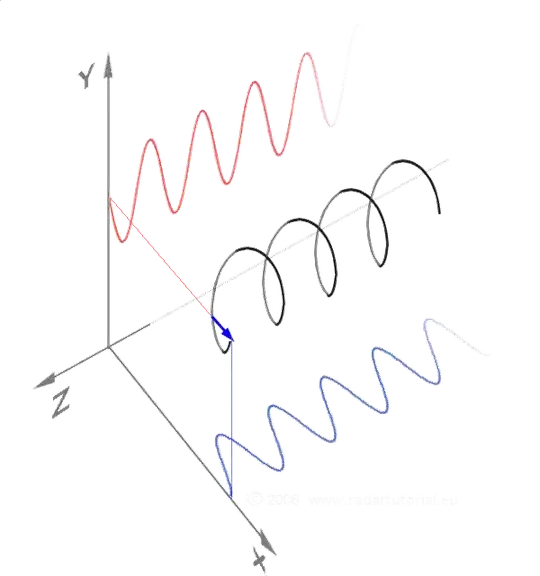Regarding spin, nothing is spinning at the photon level. (You can have apparent rotating electric and magnetic fields when discussing polarization of classical waves, but we're not doing that).
If it's not spinning, what's going on? Well, it has angular momentum.
A spin $s$ particle has total angular momentum:
$$ S = \sqrt{s(s+1)}\hbar $$
which is a vector, and we can talk about which way it points, not which way something spins.
Because position and momentum don't commute:
$$ [x_i, p_j] = i\hbar \delta_{ij}\ \ \ \ \ \ (i,j\in (1,2,3))$$
we can't know them both at the same time. That affects:
$$ \vec L = \vec X \times \vec P $$
(here $\vec L$ is orbital angular momentum, but it holds for spin too).
The commutation relations are:
$$ \vec S \times \vec S = i\hbar\vec S$$
That's right, the cross product of a vector with itself is not zero.
That means we're only able to know the projection of the angular momentum onto a single axis. For general spin-1 particles or orbital states, we choose to call that axis $z$ so that the possible states look like:

The magnitude of the angular momentum is
$$||S|| = \sqrt 2 \hbar$$
and the projection onto $z$ is
$$ S_z = s_z\hbar \ \ \ \ (s_z \in (-1, 0, 1)) $$
In a lot of discussions, where we say "spin-1", it's important to remember that that is the projection onto an axis that is quantized, and the total spin itself if $\sqrt 2$, relative to $\hbar$.
A general spin eigenstate is written in terms of the spin quantum number, $s \in (\frac 1 2, 1, \frac 3 2, 2, \ldots)$, and the $z$-projection quantum number, $s_z$ as:
$$ \chi = |s, s_z\rangle$$
For the photon, $s=1$, and $s_z$ cannot be zero (because of gauge invariance), so you can substitute:
$$|1, \pm 1\rangle \rightarrow |\pm 1\rangle $$
These two states are positive (negative) helicity eigenstates. With a propagating (in all frames) photon, the $z$-axis is not arbitrary, rather, it is defined by the photon's momentum $\vec p$. Thus the two positive (negative) helicity states are defined unambiguously by the projection of the angular momentum onto the momentum (with nothing spinning):
$$ H = \frac{\vec S \cdot \hat p}{\hbar} $$
The positive (negative) helicity state is also called right (left) circularly polarized. It is common to write these two states as $|R\rangle$ and $|L\rangle$, for right and left circularly polarized.
Now once you have a two state system, all possible pure (mixed) states can be described as by point on (in) the Bloch Sphere. It could be a two level atomic system, or a spin 1/2 particle, or photon polarization. They all have the same allowed mathematical mixtures, it's just that the physical interpretation depends on the underlying system.
For example, for the spin 1/2 particle, and pure superposition of up and down lies on the Block sphere, and represents a spin eigenstate along a different axis.
Meanwhile, transverse polarizations of the photon are not possible, and the superpositions of $|R\rangle$ and $|L\rangle$ do not allow a spin pointing in any direction. Rather, see the left figure:

The poles are the helicity eigenstates. Note that the states on the equator, such as:
$$ |H\rangle = \frac 1 {\sqrt 2}\big(|R\rangle +|L\rangle \big)$$
$$ |V\rangle = \frac 1 {\sqrt 2}\big(|R\rangle -|L\rangle \big)$$
are linearly polarized (Here, horizontal and vertical...which are orthogonal).
Now the astute reader will note that $|H\rangle$ and $|V\rangle$ are 180 degree apart, while (anti)diagonal polarizations, are at 90 degrees relative to $|H\rangle$ and $|V\rangle$. Aren't we missing 180 degrees of support?
No.
Linear polarization is a tensor polarization. It does not define an axis, it defines an alignment, which is a line without a preferred direction, and that requires 180 degrees of support to cover all directions, err, alignments.
Now you don't need two photons to make linear polarization, but it is the superposition of two circular basis states. Nevertheless, the basis is arbitrary, as long as it is made of 2 antipodal points on the Bloch sphere, it's orthonormal and complete.
Finally, all the allowed complex linear combinations of the basis states make up circular, linear and elliptical polarizations, lying on the surface of the sphere.
Inside the sphere are mixed states (e.g., density matrices), with the center being totally unpolarized.
Finally: note that the Bloch sphere for light polarization is called the Poincare sphere.



Do you have any idea why the pink and purple arrows are described on Wikipedia as being parallel or antiparallel? Is that just another conventional term? Last question. This is what really confused me. The green arrow is propagation direction, and the purple and pink arrows are supposed to be the spin angular momentum. Thanks again
– theguineapigking Sep 19 '22 at 17:20